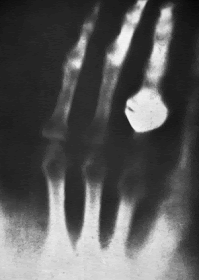In human anatomy, an azygos lobe is a rare congenital variation of the upper lobe
of the right lung. Embryologically, it arises from an anomalous lateral course of the azygos vein in a pleural septum within the upper lobe. As it has NO bronchi, veins and arteries of its own, it is not a true, or even
accessory, pulmonary lobe, but rather an anatomically separated part of the
upper lobe. It is usually an incidental finding on chest x-ray or computed tomography and is as such not associated with any morbidity
but can cause technical problems in thoracoscopic procedure.
 |
Azygos lobe on chest x-ray.
Arrowheads show the delineation of the lobe. Arrow points to the azygos vein.
|
 |
Azygos lobe in
axial computer tomography. Arrow on azygos vein.
|


